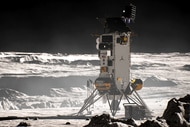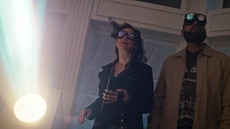NASA’s bizarre space sunflower will use shadow to shed light on exoplanets

The things NASA comes up with just keep getting more and more futuristic. NASA’s Exoplanet exploration program (ExEP) wants to put something really far-out in the sky. Michael Bottom and Thibualt Filnois, engineers at the space agency’s Jet Propulsion Laboratory (JPL) in Pasadena, CA, are creating a starshade that looks like an alien sunflower which unfurls its “petals” in space. It could help identify exoplanets no one ever dreamed existed by blocking starlight that obscures them. Could we even find extraterrestrial life on these planets? Possibly.
When the starshade mission launches sometime in the late 2020s, it will be formation flying in its coolest form ever. It would take off with a spacecraft followed by a planet-seeking space telescope about 25,000 miles behind. The shade would then “bloom” to block light from a particular star and allow the telescope to really observe which planets are orbiting. The thing is, the spacecraft have to be precisely aligned for it to work, or else starlight would find its way in and make faint exoplanets impossible to see.
"The distances we're talking about for the starshade technology are kind of hard to imagine," said Bottom of the starshade and the telescope. “both [are] experiencing these little tugs and nudges from gravity and other forces, and over that distance we're trying to keep them both precisely aligned to within about 2 millimeters."
Until NASA does launch the starshade, the only way we have of detecting previously unknown exoplanets is waiting for them to transit their stars. Waiting for a drop in star brightness that signals an exoplanet is passing could take a while. That and, it’s rare that we ever get direct images of exoplanets. Using a starshade could mean everything from more direct images to really getting into depth about strange, faraway atmospheres and even examining surface features on which life-forms could be crawling.
"This to me is a fine example of how space technology becomes ever more extraordinary by building upon its prior successes," said Phil Willems, manager of NASA's Starshade Technology Development activity, or S5. "We use formation flying in space every time a capsule docks at the International Space Station. But Michael and Thibault have gone far beyond that, and shown a way to maintain formation over scales larger than Earth itself."
The idea of a starshade was proposed 40 years before humanity ever found an exoplanet, but it was never actually brought to life until the S5 team started figuring out how to create one for real. It will probably be followed into space by NASA’s upcoming Wide-Field Infrared Survey Telescope (WFIRST). WFIRST will already be equipped with one kind of tech to block starlight — the first high-contrast stellar coronograph to leave Earth. This will help WFIRST image enormous (think Jupiter-sized) exoplanets.
While the starshade and coronograph each operate on their own, Bottom realized that if the starshade were to drift even lightly out of alignment, any starlight that sneaked in would bend around it, and the telescope would see a light-and-dark pattern with its pupil camera (which is inside the telescope but can image the front). He then built a computer program to detect he starshade’s location by recognizing when the light-and-dark pattern was centered and when it was off-center on the telescope. Filnois and his team then came up with algorithms that use this program to determine when the starshade should be realigned.
If this actually works in space, expect some really mind-blowing discoveries to surface in the next decade.
(via NASA)



























